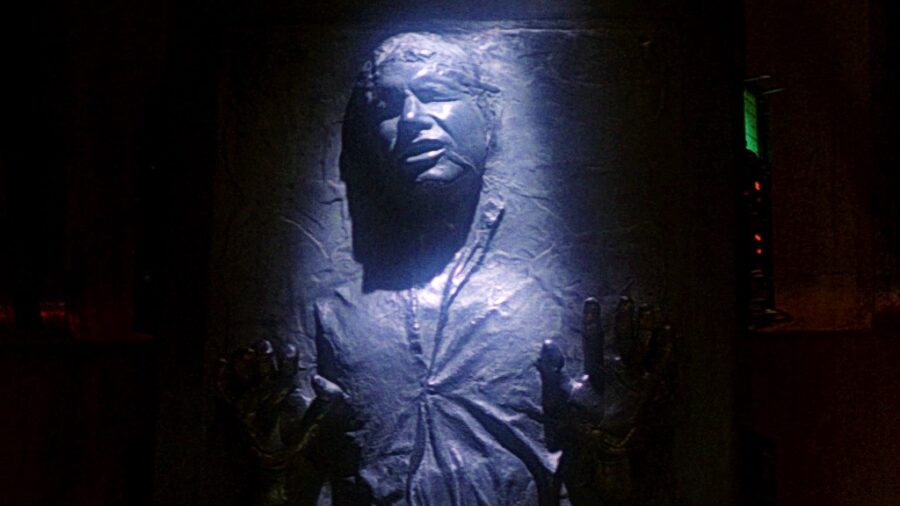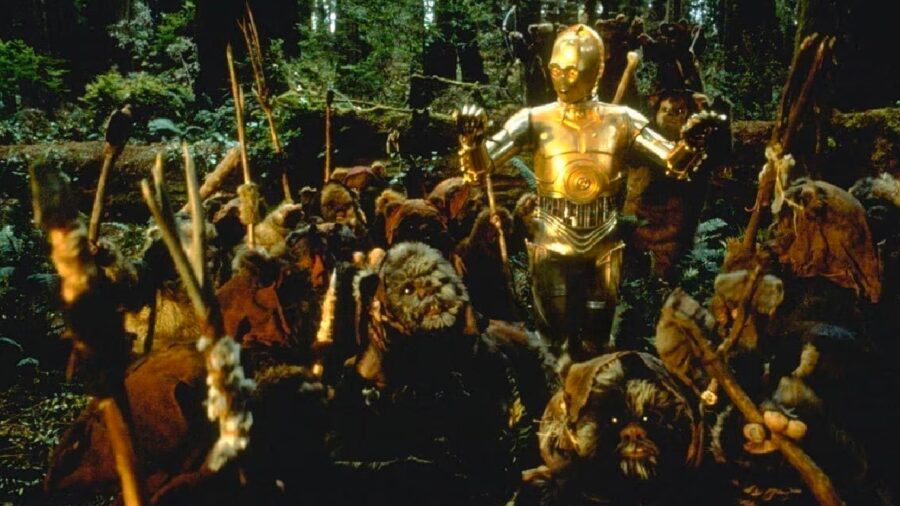The Star Trek Special Effect That Ripped Off Star Wars

Normally, audiences think of Star Trek and Star Wars as very different franchises despite how much shared DNA they have. That DNA includes some special effects, especially when you know what to look for. For example, in the Star Trek: Voyager episode “State of Flux,” Paramount hired a third party to create a special effect, and its appearance onscreen looked remarkably like Han Solo’s body in carbonite in the Star Wars film Return of the Jedi.
Seska, The Traitor

For this weird Star Trek/Star Wars connection to make sense, we need to recap the episode. “State of Flux” has Captain Janeway and the rest of the Voyager crew discovering a Starfleet replicator in the hands of the relatively primitive Kazon, which means that someone aboard the ship violated the Prime Directive by hooking these aliens up with advanced technology.
An investigation reveals that the culprit is Seska, a Bajoran-appearing officer who is secretly a Cardassian spy; after getting busted, she beams aboard a nearby Kazon ship, becoming a powerful new enemy to all of the crew and especially Chakotay, her former lover.
The Melty Kazon

The reason why this Star Trek: Voyager has some unexpected Star Wars DNA in it goes back to exactly how Janeway realized she had a traitor onboard the ship. Voyager responds to a distress call from a Kazon vessel, and when they arrive, all the aliens are dead except for one man who is comatose.
They soon realize the ship experienced a catastrophic malfunction when the Kazon tried to integrate Starfleet technology, but before that, the Away Team discovers the grisly sight of Kazon melted into the very machinery of the ship
Han Got Frozen First

However, the art department worried about their ability to make the shot look realistic, and nothing takes sci-fi fans out of a compelling story quicker than a goofy-looking special effect. This could have been a major problem, so they embraced an easy solution: they outsourced the job to a third-party special effects lab.
As always, the quality of the finished effect is in the eye of the beholder. Supervising Producer David Livingston, for example, thought the scene in question was so dark that he didn’t know if “the audience got the full impact of it.”
However, this Star Trek producer also called out the effect’s visual similarity to one of the most iconic images in sci-fi history: “It was the old Star Wars deal,” he said, “where Harrison Ford is frozen in carbonite in the wall of Jabba the Hutt’s palace.
From the outside looking in, this might not seem like a complex effect to achieve.
Star Wars’ Influence On Star Trek

While the visual similarity is striking (it’s tough not to think of Han Solo after reading Livingston’s comment), longtime Star Trek fans know that the franchise has had some major Star Wars special effects influence in most of the feature films.
Specifically, Industrial Light and Magic, the VFX company George Lucas created in 1975, did special effects for four of the Original Series movies, two of The Next Generation movies, and all three of the Kelvinverse films. Stock footage of their effects appeared in 18 different episodes, and ILM created a handful of new effects for DS9 and TNG.
Neelix X Ewoks

Long story not very short, Star Trek has been influenced by Star Wars effects for decades, but usually not so blatant as what we see in “State of Flux.” In a perfect world, we might have gotten a direct crossover between these franchises that let some of their respectively quirky characters bounce off each other.
For example, the Ewoks already love the taste of human flesh—how much tastier would their victims be if Neelix had taught them some recipes using leola root and other exotic Delta Quadrant ingredients?













